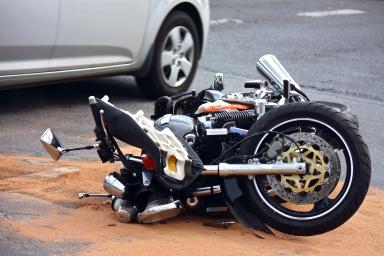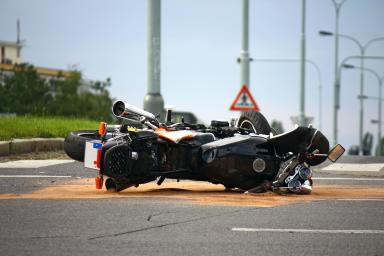Maryland Motorcycle Laws

Maryland, located in the heart of the Mid-Atlantic, serves as a passageway from one state to another and is itself a prime destination. With its highways, byways, and scenic bays, there’s plenty of opportunity to enjoy a motorcycle ride.
The period from April to October is perfect for experiencing what the state has to offer while on the back of a motorcycle. However, from 2017 to 2021, people taking advantage of these months’ ideal riding conditions resulted in more instances of collisions; the average number of cases per month during those times ranged from 121 to 180, way higher than the average during the colder months, which peaked at 60.
In those five years, the total count of motorcycle crashes reached 6,610, with over half happening in state and county routes. Injury and fatality numbers added up to 4,736 and 371, respectively. These sums translated to having just about one out of four chances of surviving unscathed from a motorcycle accident. One probable reason is that motorcycle riders are more vulnerable than drivers and passengers in enclosed vehicles.
In line with the risks associated with motorcycles, Maryland has established several laws and various programs toward safer roads and better driving behavior. Government resources are also available for those involved in accidents.
If you have recently been involved in a motorcycle crash as a victim and are unaware of how to proceed, let this article discussing your legal rights and other relevant information help you decide your action plan.
Maryland’s Speeding Laws
Speeding is a form of aggressive driving that amplifies the risks of operating a vehicle. When driving a motorcycle at an excessive speed, one’s reaction time tends to falter, and crashes are likely to be more severe.
In 2020, despite declining traffic volume and road accidents, Maryland saw an uptick in speeding citations. During the same year, 34% of motorcycle crash fatalities in the country occurred due to speeding.
On account of the dangers this driving behavior poses, Maryland has been utilizing various traffic calming techniques and enforcing two types of speeding laws:
Statutory Speed Limits
There are different maximum speed limits for roadways in the state:
Some jurisdictions also have specific speed restrictions for drivers passing through their roads. For instance, in Baltimore County’s alleys, vehicles cannot go beyond 15 mph.
Basic Speeding Law
The premise of this law is simple — one should drive at a safe speed based on the given conditions. For example, driving in rainy weather requires a motorcycle rider to slow down, but doing so during normal conditions can negatively affect the surrounding traffic.
Speeding Violation Penalties
If found guilty of going beyond a road’s posted speed limit, a motorcycle rider has to pay a fine ranging from $80 to $1000, depending on how excessive their speed was and where the incident took place. They will also acquire up to five demerit points on their driver’s license. Meanwhile, flouting the basic speeding law means paying a $90 fine and receiving one point on their driver’s license.
If a motorcycle driver causes an accident while violating the state’s speeding laws, they may also be liable for the resulting property damage, injuries, and death.
Motorcycle Helmet Laws in Maryland
Maryland takes the safety of road users seriously, as evident in Section 21-1306 of the state code, which requires all individuals to wear the correct gear while riding a motorcycle. Helmets designed for motorcyclists should conform to federal standards regarding compliance tests and the following gear components:
A retention system in the form of chin straps.
A comfort liner made of cloth.
A shock-absorbing liner made of expanding polystyrene foam with around one-inch thickness.
An outer shell made of polycarbonate, carbon fiber, fiberglass, graphite, Kevlar, and/or thermoplastic.
A helmet should also properly fit its user to work effectively. Guides are available online to help motorcycle riders choose the right headgear size and shape.
If found to be in violation of this law, one might have to pay up to $500 in fines. In addition to monetary penalties, not wearing a helmet can also lead to severe consequences if one becomes involved in an accident. In 2021, unhelmeted riders accounted for about 20% of motorcycle crash fatalities in the state.
Interestingly, an injured motorcyclist can still recover damages after a mishap despite not wearing a helmet since it’s not considered a contributing factor to an accident.
Headlight Requirements for Motorcycles in Maryland
You should take every opportunity to practice road safety when riding a motorcycle since you’re more risk-prone than other road users. One way of protecting yourself is to utilize the headlight, a motorcycle feature required by state law.
Maryland’s Motor Vehicle Administration recommends its use even during the daytime to make a motorcycle more noticeable while on the road. It is even more important to turn it on at night to prevent accidents. From 2016 to 2020, a significant portion of fatal motorcycle crashes — equivalent to 22% of the recorded cases in the state — happened between 7 p.m. and 9 p.m.
Maryland’s Hit-and-run Laws
A hit-and-run refers to a situation where a driver abandons the scene of the accident they were involved in. In Maryland, this can lead to demerit points on one’s driver’s license, jail time, and fines. In crashes causing serious injuries or death, the penalties are much more severe; one may be charged with a felony, pay up to $10,000 in fines, and spend up to a decade in prison.
The responsible parties in motorcycle accidents should know that it’s their legal and moral obligation not to immediately leave the scene and the victims involved. Despite this, more than 650 cases of motorcycle hit-and-runs in Maryland were logged between 2015 and 2022.
Since the introduction of the Yellow Alert Program in 2015, members of the state’s police force have been able to quickly share information to apprehend hit-and-run drivers. It has become easier to discover violators and have their victims hold them accountable.
Drunk Driving Laws in Maryland
Drunk driving, a public safety threat across various states, caused more than 13,000 preventable deaths nationwide in 2021. In Maryland, the average number of drunk driving cases per year is 169.
The state makes a distinction between a DWI and a DUI. A DWI pertains to operating a vehicle while one’s normal faculties are impaired due to alcohol or drugs. A DUI, meanwhile, is more specific and a greater violation; it refers to driving a vehicle with a BAC level of 0.08% or higher.
Different penalties are imposed for these violations. For instance, a first-time conviction translates to the following:
If a motorcycle driver refuses to submit to a chemical test while suspected of DUI or DWI, they are not absolved from having a drunk or impaired driving conviction and may still face punishment.
Things become more complicated, and the consequences become more serious if an impaired or drunk driver causes an accident that leads to property damage, injury, or death. Their victim has the legal right to file a claim or lawsuit against them and recover compensation for the damages they have incurred.
Maryland Laws on Reporting a Motorcycle Accident
In Maryland, a driver involved in a motorcycle accident must report the event to the Motor Vehicle Administration under specific circumstances, like if the accident resulted in injury or death or if a party involved is suspected of DUI or DWI. Reporting is also necessary in the case of a hit-and-run or if one or more vehicles cannot be safely moved.
Within 15 days, an involved driver should send an accident report with their:
Insurance carrier’s name and address.
Insurance agent’s name and address.
Insurance policy number.
If a motorcycle accident does not require reporting — like if no damages were sustained — one should exchange relevant information with the other party according to the law. The state makes it easy for drivers to do so through the collision information exchange form readily available online.
Maryland’s Motorcycle Insurance Requirements
Motorcycle owners in Maryland must demonstrate proof of financial responsibility through liability insurance. This pays for the damages incurred in the event a policyholder becomes involved in an accident resulting in injury or property damage. Motorcycles, just like regular cars, should carry liability coverage amounting to at least:
$30,000 for bodily injury per person.
$60,000 for bodily injury of two or more people per accident.
$15,000 for property damage.
Uninsured and underinsured motorist insurance with the same minimum requirements is also mandatory. Apart from the policies required by state law, various add-ons may also be purchased, including ones that pay for damages due to natural disasters, theft, and collisions with non-moving objects like trees.
Failing to obtain the required coverage means one may be charged with a misdemeanor and face demerit points on their driver’s license, fines, and jail time. Moreover, being unable to show proof of insurance — through a printed or digital insurance card — when asked by a law enforcement officer is an offense punishable in the form of a traffic ticket.
If an uninsured motorcyclist causes an accident, they’re bound to face graver outcomes; aside from losing their driver’s license and paying fines, they may be sued by the victim and pay any damages out of pocket.
Maryland Is an At-Fault State for Insurance Claims
Because Maryland follows the at-fault system for insurance claims, a motorcycle accident victim has the legal right to pursue compensation from the at-fault party. They may go directly to the responsible driver’s insurance carrier or file a claim through their own insurance provider.
However, the claim process is best handled by personal injury lawyers with a successful track record dealing with insurance companies; they are well-versed in the strategies insurers use to prevent victims from receiving the compensation they are entitled to.
How Much Can Someone Sue for a Motorcycle Accident in Maryland?
In Maryland, motorcycle crash victims have the right to pursue compensation based on the economic and non-economic damages they have sustained. Economic damages pertain to monetary losses, including medical expenses, lost wages, and vehicle repair costs. Noneconomic damages, meanwhile, refer to intangible damages such as pain and suffering, loss of companionship, and emotional anguish. Generally, the more losses one incurs, the greater the recoverable damages are.
In particular circumstances — if the at-fault party is guilty of reckless conduct that resulted in an accident — punitive damages may also be awarded. Driving under the influence of alcohol or drugs is an example of irresponsible behavior.
For motorcycle accident cases in Maryland, only one type of recoverable damages has an amount limit, which increases by $15,000 yearly. As of January 2023, plaintiffs may be awarded up to $920,000 in noneconomic damages.
Maryland Is a Pure Contributory Negligence State for Motorcycle Accident Lawsuits?
Maryland is one of the few states that abide by the stringent rules of the pure contributory negligence system for motorcycle accident lawsuits. Many find this doctrine skewed against victims because it prevents them from obtaining damages if they have any amount of fault — even 1% — in an accident.
Meanwhile, if a plaintiff can show the absence of fault on their part — which may be difficult in certain situations — they will be awarded compensation for the damages they have incurred.
If you are a motorcycle accident victim, there are things you should do and avoid to obtain the compensation you deserve under the pure contributory negligence system. Employing the help of a personal injury attorney who can provide solid advice and represent you in court is a good way to increase your chances of a favorable outcome.
Maryland’s Statute of Limitations for Motorcycle Accidents
Maryland has a statute of limitations for personal injury and property damage lawsuits involving motorcycle accidents. One can only pursue legal action against another party within three years from the date of the incident. Wrongful death cases are also given the same timeframe, which begins on the day of the victim’s passing.
Note that there are instances where the three-year time limit does not apply. For example, if a minor is involved in an accident, the clock only starts running once they turn 18 and stops on their 21st birthday.
If you are a motorcycle accident victim, starting the legal process as soon as possible is in your best interest, no matter how long the statute of limitations is for your case. Filing legal action while memories of the accident are fresh and evidence is still well-preserved means a better chance of successfully recovering damages.
Legal Resources for Maryland Motorcycle Accident Victims
Maryland Court Help Centers
The Maryland Court System offers free limited legal assistance to locals. If you are a motorcycle accident victim overwhelmed with the legal procedures you’re facing — such as court form completion and submission — you may ask the help centers for guidance online, via phone, or in person. For more information, contact 410-260-1392.
The People’s Law Library of Maryland
This online resource, aimed at plaintiffs planning to represent themselves in court, contains comprehensive articles on various legal processes. It also has a lawyer directory and is available in several languages. Legal questions can be sent through the site or via phone at 410-260-1392.
Civil Justice, Inc. Lawyer Referral Service
This nonprofit is committed to making justice more accessible to low- and moderate-income households by offering low- to no-cost legal services. It has a network of lawyers practicing different legal fields, including personal injury law. The Baltimore-based organization can be reached by phone (443-853-1011), fax (410-431-3496), or email (cj@civiljusticeinc.org).
Expertise.com StaffAuthor
Step into the world of Expertise.com, your go-to hub for credible insights. We don't take accuracy lightly around here. Our squad of expert reviewers, each a maestro in their field, has given the green light to every single article you'll find. From rigorous fact-checking to meticulous evaluations of service providers, we've got it all covered. So feel free to dive in and explore. The information you'll uncover has been stamped with the seal of approval by our top-notch experts.


![¿Cuál es la indemnización promedio de las demandas por accidentes de moto? [2023]](https://images.ctfassets.net/k00sbju4hbzq/590XSDSoqNVs6XSMNY5s3G/a969ee3bedaaf9016cec601fc30f495b/average_motorcycle_accident_settlement.jpg?fit=fill&w=384&q=75)

